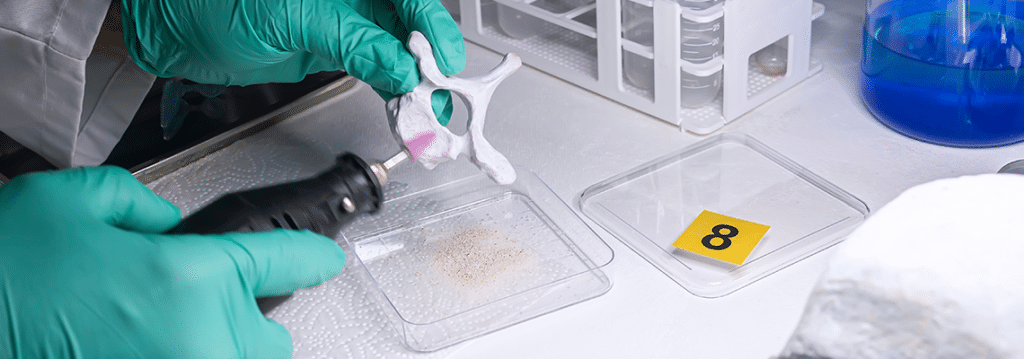
A Powerful Duo for Extraction and Typing of Challenging Samples
June 16, 2021
Many forensic DNA labs only process hairs with an intact root present, since it’s challenging to isolate DNA from rootless hair shafts. InnoGenomics is proud to share that, together, our extraction and purification system combined with a small amplicon DNA typing system can help solve this problem. By using the InnoXtract and InnoTyper 21 (IT21) kits together, isolation and typing of nuclear DNA from rootless hair shafts can become achievable. And we have an exciting announcement coming soon for degraded bone samples.
In many rootless hair samples, nuclear DNA short tandem repeats (STR) are largely unsuccessful in terms of profiling due to the large amplicon size required for many STR loci. This then necessitates the use of mitochondrial DNA (mtDNA) which may involve sequencing with older methods or next generation sequencing (also known as massively parallel sequencing)—and is also labor-intensive. Additionally, the associated statistical analysis does not provide the same discrimination power as IT21 profiles.
But now there’s a method for extracting DNA from rootless hairs exhibiting low template quantities, inhibition, and degradation. InnoGenomics CEO Dr. Sudhir Sinha recently presented this innovation to the American Academy of Forensic Sciences.
“A magnetic bead extraction system which we developed is optimized for extraction. And it is specifically designed to capture low-level, highly degraded DNA,” said Dr. Sinha in his presentation on “The Development of a DNA Extraction Method from Rootless Hair Shafts.”
Dr. Sinha’s presentation was based in part on research conducted at Sam Houston State University. For extraction, the researchers utilized InnoXtract, which uses an innovative nanoparticle magnetic bead-based protocol to isolate genetic material from digested hairs. They also used IT21 and Fusion for STR profiles.
InnoXtract validation studies demonstrate sensitivity and reproducibility with low copy levels. Sensitivity studies run on degraded samples gave quantification values down to the sub-picogram level (e.g., 0.2 pg/µL). Profiles were obtained from 15-30 picograms (pg) of total degraded DNA. DNA recoveries ranged from 53% to 100% for the neat sample (degradation index, DI = 43) and dilutions of 1:10, 1:100 and 1:1000.
Additionally, InnoXtract was compared to EZ1 extraction and produced a higher recovery concentration under the same conditions and utilizing the same sample size. Hair shaft samples were extracted in duplicate over two days by two different operators—with comparable results.
The IT21 kit employs 20 retrotransposable element insertion polymorphisms, or INNULS (Insertion/Null) markers and Amelogenin, with small amplicons (~ 60-125 bp). This methodology allows for a less labor-intensive workflow than mtDNA. The workflow is compatible with currently used PCR and capillary electrophoresis instrument platforms for STR processes. This heavily impacts the use of rootless hair shafts by allowing sufficient DNA to be typed with a hair shaft a few centimeters in length (e.g., 2 cm).
While rootless hair shafts are one of the primary modes of evidence found at crime scenes, bone fragments can also be discovered at crime scenes, specifically older crime scenes where other tissues have decomposed. While the InnoXtract system is currently optimized for rootless hair shafts, InnoGenomics is also working to optimize it for extracting DNA from bone fragments. To find out when this new capability is available, follow us on LinkedIn or Facebook.

